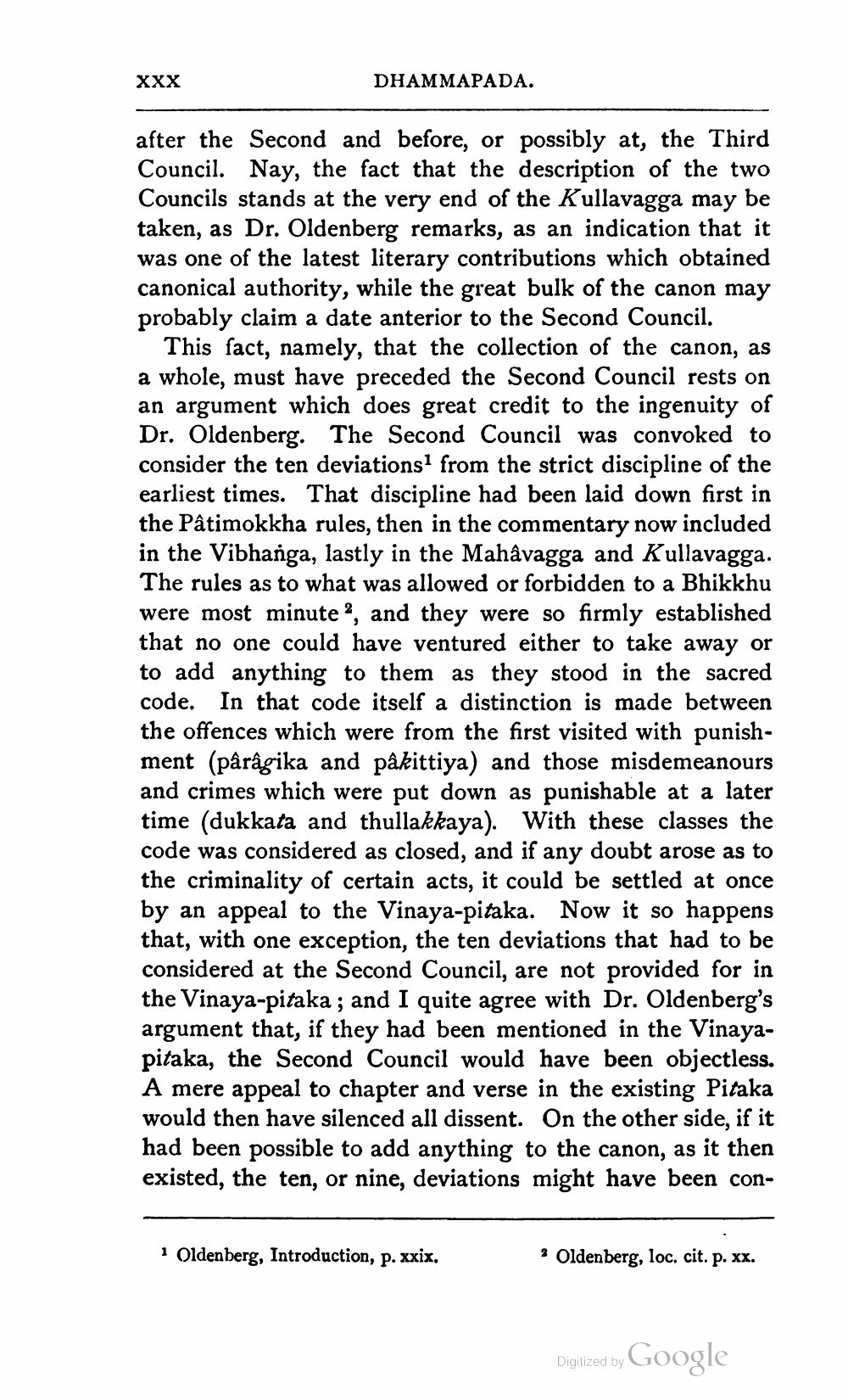________________
XXX
DHAMMAPADA.
after the Second and before, or possibly at, the Third Council. Nay, the fact that the description of the two Councils stands at the very end of the Kullavagga may be taken, as Dr. Oldenberg remarks, as an indication that it was one of the latest literary contributions which obtained canonical authority, while the great bulk of the canon may probably claim a date anterior to the Second Council.
This fact, namely, that the collection of the canon, as a whole, must have preceded the Second Council rests on an argument which does great credit to the ingenuity of Dr. Oldenberg. The Second Council was convoked to consider the ten deviations from the strict discipline of the earliest times. That discipline had been laid down first in the Pâtimokkha rules, then in the commentary now included in the Vibhanga, lastly in the Mahâvagga and Kullavagga. The rules as to what was allowed or forbidden to a Bhikkhu were most minute ?, and they were so firmly established that no one could have ventured either to take away or to add anything to them as they stood in the sacred code. In that code itself a distinction is made between the offences which were from the first visited with punishment (pârâgika and pâkittiya) and those misdemeanours and crimes which were put down as punishable at a later time (dukkata and thullakkaya). With these classes the code was considered as closed, and if any doubt arose as to the criminality of certain acts, it could be settled at once by an appeal to the Vinaya-pitaka. Now it so happens that, with one exception, the ten deviations that had to be considered at the Second Council, are not provided for in the Vinaya-pitaka ; and I quite agree with Dr. Oldenberg's argument that, if they had been mentioned in the Vinayapitaka, the Second Council would have been objectless. A mere appeal to chapter and verse in the existing Pitaka would then have silenced all dissent. On the other side, if it had been possible to add anything to the canon, as it then existed, the ten, or nine, deviations might have been con
1 Oldenberg, Introduction, p. xxix,
* Oldenberg, loc. cit. p. xx.
Digitized by Google




